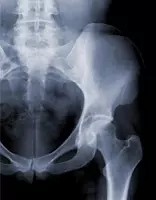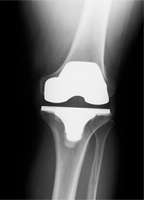- Home
- Patient Care
- Services
- Hip & Knee
- Adult Reconstruction and Hip Preservation Overview
- Treatment Approach
Treatment Approach

 Helping to shape the future of joint surgery, Washington University Orthopedics surgeons specializing in joint preservation, resurfacing and replacement are innovators in surgical techniques designed to preserve as much bone and function as possible.
Helping to shape the future of joint surgery, Washington University Orthopedics surgeons specializing in joint preservation, resurfacing and replacement are innovators in surgical techniques designed to preserve as much bone and function as possible.
Medical conditions that can benefit from primary joint replacement of the hip or knee include osteoarthritis, inflammatory arthritis, osteonecrosis, post-traumatic arthritis and other disorders. Revision total joint replacements by nationally recognized orthopedic surgeons also can ease the pain and suffering in patients whose previous implants have failed due to loosening or fracture.
Specific disorders in young adults, including hip dysplasia, osteonecrosis of the femoral head, post-traumatic non-union or mal-union of the proximal femur, early osteoarthritis, old slipped capital femoral epiphyses and other developmental deformities of the hip and knee, can be evaluated for joint preserving operations. Care for these younger patients is a relatively new and evolving discipline within orthopedics and is a result of studies in the 1980s that indicated most patients with hip arthritis diagnosed later in life had a mild, pre-existing hip deformity. The joint preservation and reconstruction specialists with Washington University Orthopedics offers multi-disciplinary care with specialized diagnostic equipment and treatment options, thereby enabling surgeons to treat hip deformities at earlier ages. Surgical services include hip arthroscopy, hip impingement procedures, hip osteotomies, and replacement.
A new alternative to total hip replacement for some younger patients - usually 60 years of age or younger who are highly active - is hip resurfacing. This procedure can benefit some patients with osteoarthritis.
Rehabilitation for those undergoing reconstruction or joint replacement begins immediately after surgery. The rehabilitation team helps patients stand up and sit down, get into and out of bed, use a walker or cane, and progress through rehabilitation to enhance range of motion and strengthening around the joint. Programs are individualized for each patient based on their condition and type of surgery. In an outpatient setting, patients increase their ability to bear weight while walking, and strive to walk without an assistance device and rapidly resume an active lifestyle with minimal limitations.